
BRINGING TRANS STORIES TO THE BIG SCREEN
Rajvi Desai (he/they/she): Te Shima and I are working on [our first] feature documentary, Mother Wit, about Black trans women in Brooklyn who are pursuing education as a way to redefine success and longevity for themselves and their communities.
Te Shima Brennan (they/them): Mother Wit is the idea that since enslavement, Black maternal figures have passed down wisdom about how to survive and move in a world that continues to oppress them and use their bodies. This plays an important part in Black culture, especially when you’re Black and trans or queer, and those family structures are taken from you.
Seyi Adebanjo (they/them): [As] someone who is Yorùbá, [and] an Òrìṣà practitioner, spirituality is already ingrained. My project, Afromystic, is Queer and trans storytelling in Brazil, Nigeria, and the US through conversations about spiritual practices that show us in our fullness. That brings in generational healing [and] ancestral wisdom told through the characters [and] the land. Do you have [your participants] talk about rituals or spirituality?
TB: When we started, it was about Mother LaTravious. Now that [she’s] an ancestor and we're looking at other Black trans ancestors, we want to incorporate ritual and spirituality into the film. Some participants [have] practiced or practice African spirituality. We hope to dive into spiritual traditions like Ifá and Lucumí as a way to bring [that] into the film.
RD: How are you doing that with Afromystic, Seyi?
SA: All of the participants have allowed us to capture rituals. We’ve had Candomble, Isese or West African Òrìṣà, and Lucumí practitioners come together for conversations and rituals, [and] filmed different lineages of Òrìṣà worship individually. I'm privileged and honored to have [that] on camera. Now that I'm a major character, [I’m] looking at being in rituals in front of the camera.
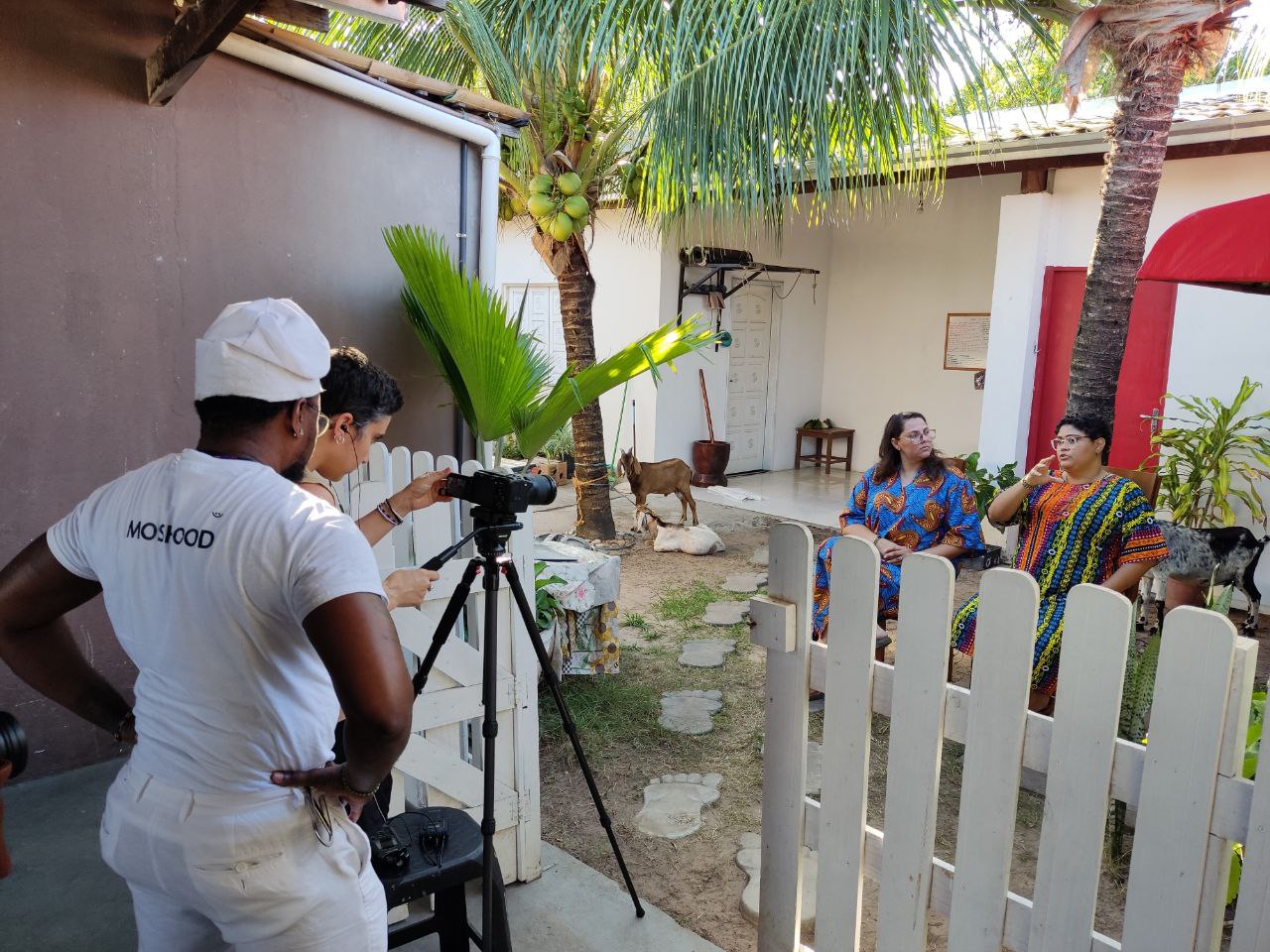
TELLING AUTHENTIC STORIES ON SCREEN & THE WORK IT TAKES BEHIND-THE-SCENES
RD: There's talk around who should be telling whose stories [and] positionality. A lot of times, these conversations are reduced to optics. “This person identifies as this, so it's okay if they tell this story.” But it should be so much more complicated and intersectional than that.
TB: That's what we've been doing with Mother Wit. [We’re] able to tell a genuine story because we’ve sat in community long enough to see things that [an outside] filmmaker might not see. There is a true beauty of telling stories in community versus from the outside.
SA: As we sit in community, there's also vulnerability and trust. There's ways you can [say], “Let's turn the camera off [and] get to know each other.” It leads to the story really coming from inside the community.
TB: Being able to put down the camera, get to know them and allow them to know you develops such a rich story. There's a level of both sides [wanting] to tell a story that’s vulnerable and well-rounded.
RD: The expectations that we put on white, cis or non-queer filmmakers, to a certain extent, need to be happening in queer communities and between filmmakers of color. You still have a different positionality than your participants. Our film is about Black trans women, who have a very specific experience in the world, [and] neither of us are Black trans women. If you step away from the umbrellas of “POC” or “queer”, you dig deeper into where the gaps in your understanding lie.
SA: Documentary is [also] about drama, but how do we reinterpret what drama means? It doesn't always have to be something traumatic. Have folks or people in the community you’re documenting pushed back? How do y'all engage in that conversation?
RD: I joined [the project] after [Te Shima]. It was months before I was actually integrated. [It takes] time to establish trust. How that came for me [was] to show up without cameras and not come from a place of entitlement. I had to learn to be vulnerable. If it’s about mutual trust, they should be able to know me — if they want to — as much as I want to know them.
TB: I knew there would be distrust for journalists or filmmakers. People in those fields go in and out of the organization all the time. I tried my best to sit, share and listen versus trying to pull a story out of them. The more I allowed others to take up space, the more they opened up and trusted me.
SA: [I] also [do] some things. [I] share my story as I'm asking people to share theirs, so they learn about me as [I learn] about them. What also helps is showing people my work. They [see],”You're this type of filmmaker,” versus [someone] who [exploits] our communities. What’s sacred to me is [making] sure the participants have agency. They're not just in front of the camera. They [are] in the editing room with me [having] conversations.
TB: Having [our participants] see themselves on camera really excites [them] — and us. We get to see whether we’re telling a story that they also believe is authentic. Collaborating in this way has made them more comfortable and crafted how we've told the story.
THE AGE OLD QUESTION: SHOULD YOU PAY DOCUMENTARY PARTICIPANTS?
RD: In the documentary industry, it’s a big no-no to pay your participants. But we are expecting them to give their time, attention and effort without offering much in return during [a] years-long production. It's not fair. Have you found creative ways to pay your participants?
SA: My goal is to pay the major characters in the film. I put it in grants. Where it feels like a double-edged sword is when people who are not major characters see that you have a camera and that you're Black [or] brown, and want to press you for money. This is where I feel taken advantage of. I wish there were more transparent conversations [to say] there's different ways [of] compensation. We can get food. I can pay for transportation. I can do different things, where it feels like reciprocity.
RD: People say the pitfall is that it compromises the authenticity of how the participant acts in front of the camera. Have you experienced pushback from funders?
SA: I haven't gotten [anything] from funders for stipends [to pay participants]. To be transparent, I haven't told the participants that I'm going to give them money. For me, it becomes an issue of integrity. I prefer it to be a gesture from the filmmaker.
RD: In white and cis spaces, usually [they] shut [this conversation] down. But in trans spaces, I've [heard] creative ways to add line items to the budget — location fees, mental health stipends, archival. I love that. You're filming with people [whose] basic human rights are compromised. A film feels trivial compared to the survival of people that you are spending multiple days a week with.
TB: We've been very transparent about [finances]. It's our wildest dream to pay [the women], but we have nothing. Right now this is coming out of our own pockets. The best we can do is barter. We told Mother LaTravious [that] we [could] barter for [her] time [and we made] videos for social media and [a] PSA in exchange.
SELF-PRESERVATION, FINDING COMMUNITY & BARRIERS IN THE FILM INDUSTRY
RD: In 2023, we [couldn’t] show up as often with cameras. We had to rent them and we didn't have any money. We explained to our participants why we weren’t filming as much, and they offered to buy us a camera. We said no, of course, but it's heartwarming to realize that they also feel they have a stake in [finishing the film], which is very essential. Have you been able to access resources that feel gatekept or out of reach?
SA: I feel like we're selling our ass. I get it. We're in a really competitive industry. [But] it becomes so depressing when you get all these no’s, [and] see folks who get [funding] aren’t uplifting anyone. Then you have glimmers of sunshine: a fellowship, a small grant, or a successful crowdfunding campaign. Sometimes that takes so long. You don't get those rays of sunshine quickly enough. That's where I'm at today. Maybe I should be more optimistic, but it feels like I've worked my ass off.
TB: I’m in the same boat. If you're not telling stories about minority communities [driven by] spectacle, trauma, or a problem, people aren't interested. People's reactions to Mother Wit were so-so, until Mother LaTravious passed. People were only interested because there's spectacle involved. It's like playing with fire — , [you hope to] stay in it long enough to cook something — and at the same time, [you’re] dancing around, trying to not burn yourself. It's a tricky dance that I haven't figured out. Do I sell my soul? Or do I try to tell authentic stories that the industry isn't interested in funding?
RD: I'm lucky enough to have places like Brown Girls Doc Mafia where I feel I’ll be taken seriously and given the attention that I deserve. [The industry] is still majority white and cis. You have to be in a [shielded] headspace to walk into those spaces and advocate for yourself. That's why I stopped moving in white and cis spaces. I don't have the headspace.
TB: With other Black and brown queer and trans filmmakers, there's an understanding that we're on the same level. We don't have to prove anything. That doesn't happen in white spaces to people of color. I [was] talking to [a] documentarian at a conference last year. This older white man stopped us mid-conversation so he could bring the documentarian over to talk to another white person. It's instances like that where I'm not even seen as a person, or worth people’s time. In [Black and brown] spaces, my conversation is just as important. I feel seen and have a sense of power that I don’t have access to in white spaces.
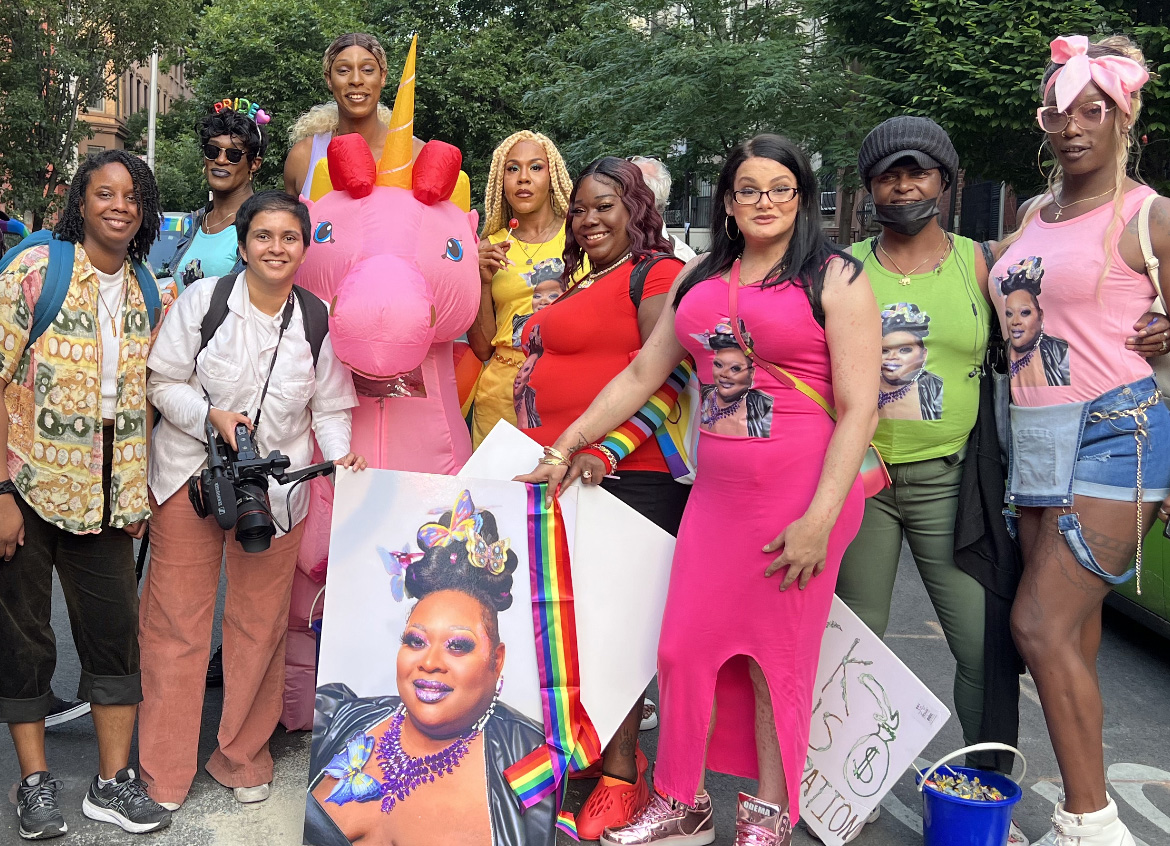
THE IMPORTANCE OF AGENCY IN DEFINING A FILM’S AUDIENCE
RD: How does [defining] your audience in this very clear way inform your practice?
SA: There's a tendency to get lost if you're thinking [of] a global audience. You're not able to articulate the spirit of the story. Since this film is for Black and brown folks, it feels easier. [Still], there's pushback. My work is very nonlinear — some people call it experimental. I don’t know how to be a traditional documentary filmmaker. But there's freedom in being able to tell the story that way, and knowing that I'll have to deal with people who don't get it.
RD: Who do you make films for?
SA: Honestly, people who look like me — Black, brown Queer, trans, gender non-conforming, gender diverse, spiritual, [connected] to culture. I know [my] work [has] an ability to transcend communities. People of whiteness will gain something from [my work]. I want them to gain something while knowing that they're not the primary audience.
TB: My films are what my younger self wanted to see: people who look like me or have the same life experiences. If people outside of those communities pick things up from the stories, great, but it’s not my intention. Rajvi and I aren't trying to make a “Trans 101” film. If you watch my work, you need to handle the prerequisites on your own if you're not part of the community.
RD: The audiences I make films for will always be people who can see themselves in the participants. I want my audiences to be queer people, trans people, people who are directly impacted and also inspired by the themes of the film. I make very emotion-based and joy-based films. Who gets to be inspired? Who gets to experience that joy? Queer and trans people of color. That's all I care about. I just want my communities to be happy and thriving.
This interview has been edited for clarity.


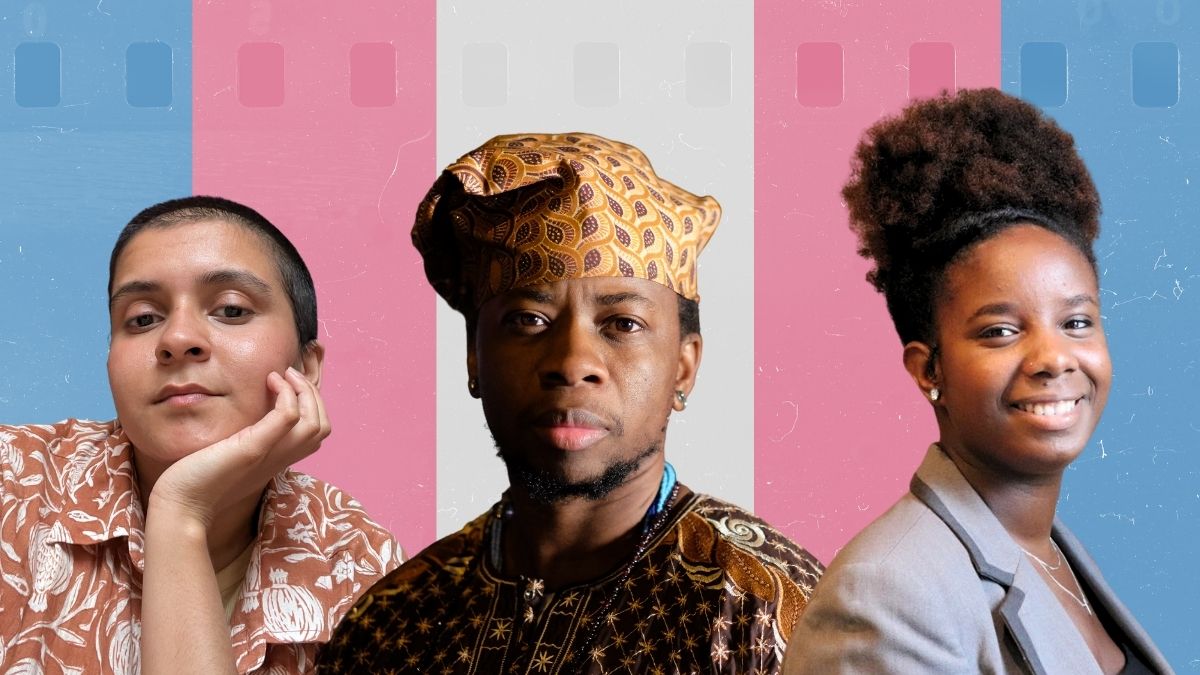

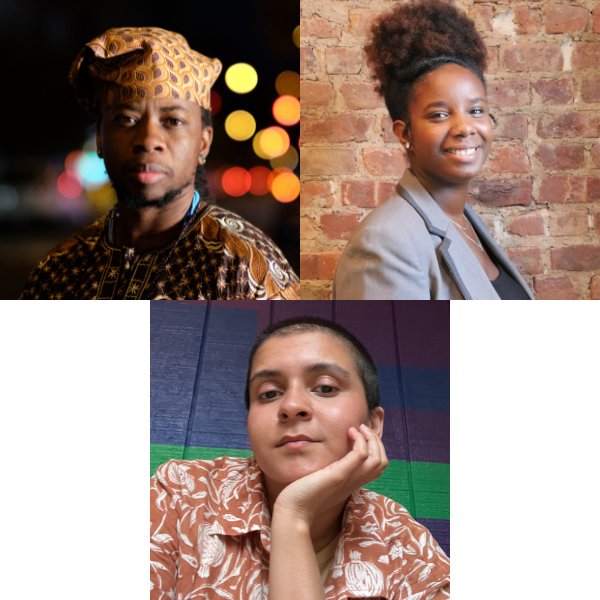
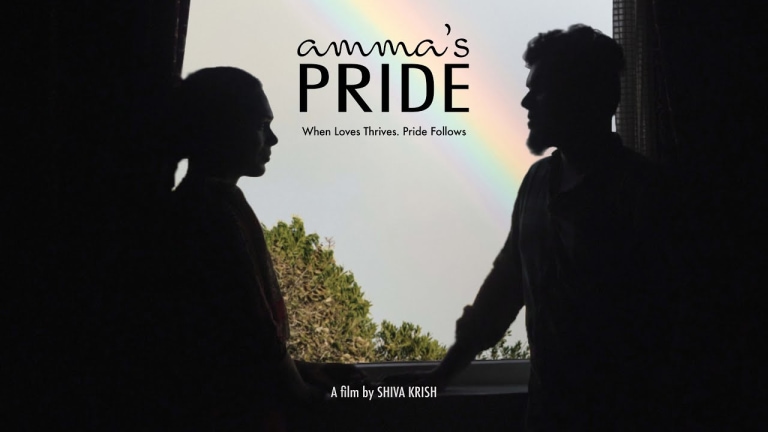
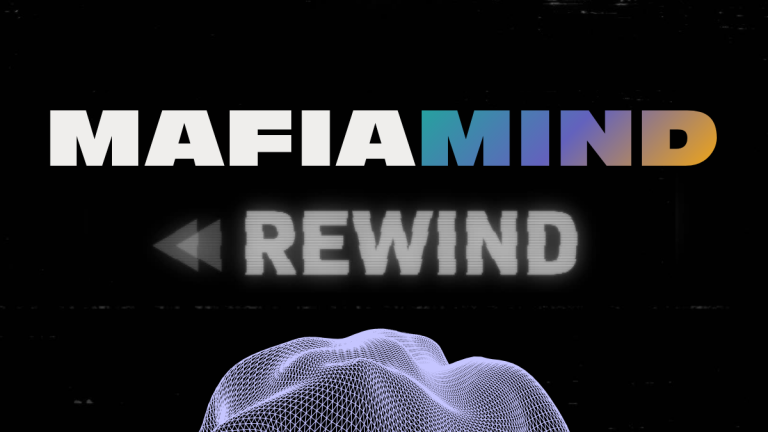
.png?resize=768x0)